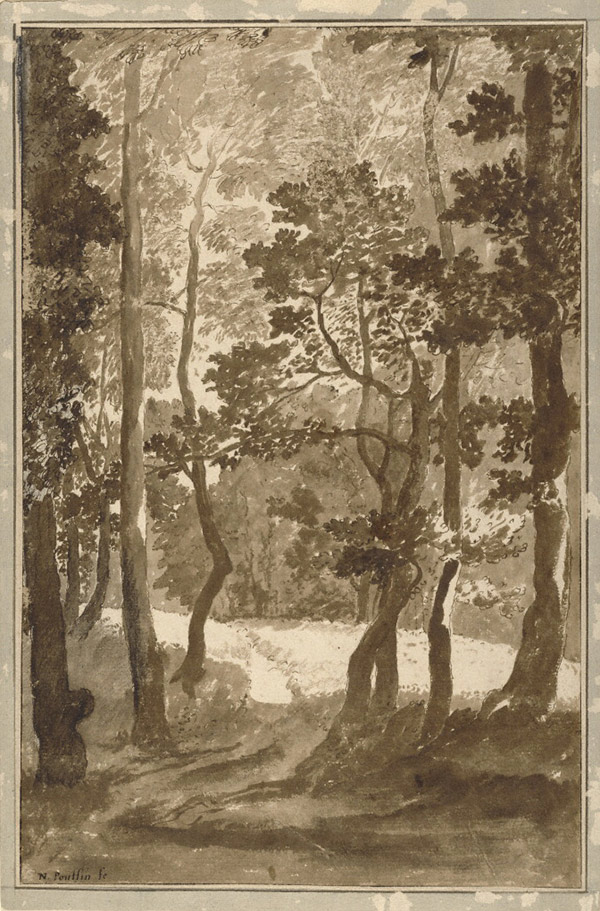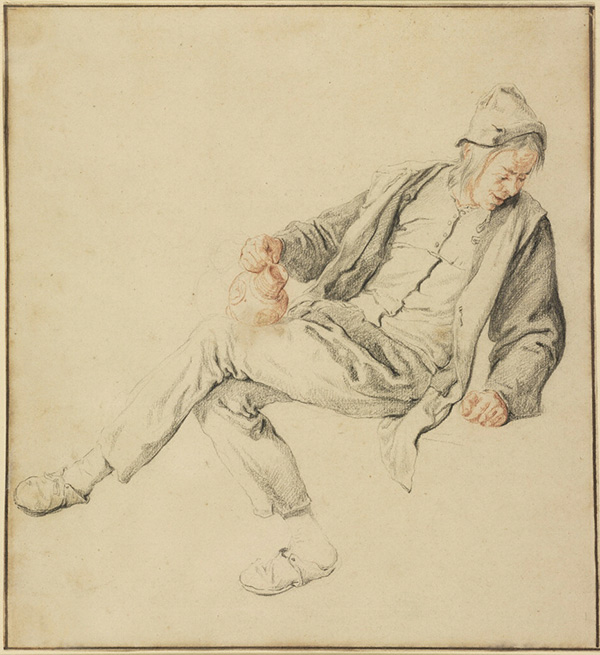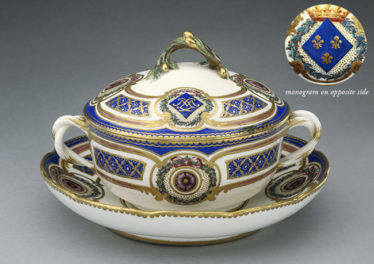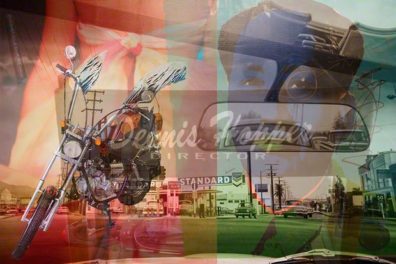Why would a curator write exhibition labels with only 17 syllables? This week on Getty Voices, drawings curator Stephanie Schrader uses haiku to invite us to look at Old Master drawings in a new and unusual way.
Drawings + haiku all week with Stephanie:
Getty Voices on Facebook | Getty Voices on Twitter

Portrait of a Young Woman Reclining, 1897–98, Gustav Klimt. Black chalk on paper, 17 15/16 x 12 3/8 in. The J. Paul Getty Museum, 2009.57.1
The exhibition of drawings I’ve just curated at the Getty Museum focuses on something that’s long intrigued me: what’s absent from a work of art. The Poetry of Paper explores negative space, the areas of an artwork that an artist deliberately leaves unfilled.
Negative space isn’t obvious at first glance, because our attention goes straight to the artist’s marks. Our imagination fills in the blank areas, transforming them into midday sun, glinting silk, a misty cloud, a tablecloth, a heavenly glow.
The lounging woman above seems to be reclining against a pillow, but that pillow is entirely in our minds. Gustav Klimt added only a contour line, leaving the lower corner of the sheet bare.
The landscape below has an intermission of nearly blank paper that, under the brush of Nicolas Poussin, becomes a dramatic flood of sun in a forest clearing. We perceive it not as the absence of ink, but as the presence of light.

A Path Leading into a Forest Clearing, about 1635–40, Nicolas Poussin. Pen and brown ink and brown wash on paper, 15 3/16 x 9 11/16 in. The J. Paul Getty Museum, 96.GA.24
Drawings like these may look spontaneous, as if they fell into place with a few effortless strokes. But like negative space itself, this spontaneity is an artful illusion. The creators of the drawings in The Poetry of Paper carefully planned their compositions, deciding with great skill which areas to fill and which to leave bare. All the drawings in our collection, in fact, have some area of reserved (unfilled) paper. Negative space isn’t a compositional trick; it’s integral to the art of drawing on paper.
An exhibition about negative space asks you to look a little differently, to pay attention to what your imagination does with what you see. As the curator of The Poetry of Paper, I decided that I had to look at things a little differently, too. So I did something that, at times during the process, seemed a bit crazy: I wrote the labels in haiku.
I am not a poet. I am not a haiku expert. I am an art historian who uses language—prose—to study, think about, and interpret art.
Normally when I write a label, I explain what an artwork represents, who the artist was, and what scholars think he or she was trying to achieve. The labels for The Poetry of Paper, a collaboration with talented poet Jim Natal, have a totally different goal: to succinctly describe what we saw when we looked at each drawing and to invite you to look at it, too. To me, haiku seemed like an ideal tool for this approach. Like the drawings in the show, it is characterized by artful restraint. It uses few words to convey much. It suggests rather than tells, calling on your imagination to complete its meaning.
Haiku also offered a good opportunity to invite visitors to contribute to the exhibition by creating poems of their own about negative space. Writing about art can be hard. The best-known form of haiku in English, with lines of five, seven, and five syllables, offers a structure to follow, a place to start. To invite you to do this, we’ve placed two drawings on easels at a writing table so you can sit, look, and, if you choose, write.
This setup was inspired by the process I used to write my own first drafts. I took the drawings out of storage, put them on an easel one at a time, and simply sat with them. I reacted only to what I could physically see: the placement of the artist’s marks; the empty space between the drawn lines; the color, grain, thickness, and edge of the paper; the intimate or grand scale of the sheet. I did nothing else for 20 minutes. And then I began to put words to the page.
Some of the haikus came right away:
Drunken peasant leans
No chair but not a drop spills
Perfectly stable

Seated Peasant Holding a Pitcher, 1680s, Cornelis Dusart. Black and red chalk on paper, 9 3/4 x 9 in. The J. Paul Getty Museum, 2004.72
Others needed 10 or 15 drafts, going back and forth between Jim and me:
Open hearth highlights
A raucous family feast
Heat of white sizzles

Making Fritters, about 1782, Jean-Honoré Fragonard. Brown wash over graphite on paper, 9 11/16 x 14 3/4 in. The J. Paul Getty Museum, 2012.4
The process of distilling an artwork’s essence into only 17 syllables taught me a lot, both about the drawings and about communicating art in a brief, evocative way. It was also meditative, creative, and fun.
I hope The Poetry of Paper will entice you to take a few minutes to look at what you see in these remarkably beautiful drawings, what you don’t see, and how your imagination combines the two into a work of art.
To see visitors’ haikus, check the exhibition webpage, which we’ll update weekly. And to read more of the haikus Jim and I wrote for the show, join us this week on the Getty Voices Facebook and Twitter.




My haiku for Sebastian Vrancx’s “View of Tivoli”:
Winter washing out
Voices compete in the rush
Of spring’s arrival
Beautiful
Look into my eyes
Forget about the pillow
Look into my eyes
These haikus are fabulous!
Maureen, here is the poem we have in “Poetry of Paper” for the Vrancx:
Walls of craggy rocks
Few strokes to slow the current
River rushes down
It’s inspiring to see how different imaginations respond differently to the same artwork.
-Annelisa/Iris editor
Although haiku (plural and singular spelling, unless a person is French) are only needed to be written in a 5-7-5 pattern in Japanese, it can be fun to write the Japanese sound unit 5-on 7-on 5-on equivalent.
sketching the sunrise-
this long wintering landscape
of sunlit horses
Alan Summers
TSKW Robert Frost Anthology 2013
For Bernini’s Portrait of a Young Man:
Staring back at youth.
“Young”: the operative word.
Seen by an old man.
Cornelis Dusart 1680s Seated Peasant Holding a Pitcher Haiku
Triangle of Red
Pitcher Face Hand Help Tippler
From Toppling Over